Bullets pelted the low mud wall above Capt. Jonathan Snyder’s head, showering him and the Afghan troops around him in dust.

Taliban machine guns rattled in the distance, spraying the other side of the wall with lead.
“Tell them to shoot back!” Jon yelled to the Afghan National Army (ANA) commander next to him. The man just stared back, frozen in the face of his first major battle. His 55 ANA troops were lined up along the low mud wall, waiting for orders in what was their first combat mission under the Canadians’ guidance.
They weren’t supposed to be ducking bullets in a stinking ditch between two farmer’s fields, waiting for the Taliban to surround them and gun them all down. They were supposed to be learning how to march.
Jon pressed his back against the wall and listened for a break in the Taliban gunfire.
He jumped up at the first break in fire and started shooting back, peppering one of the Taliban-held compounds across the field with bullets. He dropped to his belly a second later, just as gunfire cut the air where he’d been standing.
Jon’s team of four Canadian soldiers followed his lead, peeking over the wall to fire a few shots, then ducking and moving a few steps along the wall before firing again.
“Fight back!” Jon urged the ANA troops once more.
They didn’t understand his words, but they got the message. They started shooting back, two and three at a time, jumping up and firing wildly before ducking back behind the metre-high wall.
The Taliban gunfire eased off, and suddenly the Canadians and the Afghans felt like they had a chance.
Months later, Jon and his Canadian troops would be honoured at Rideau Hall for showing the Afghans how to fight off the Taliban and escape the ambush, while making sure that no one was left behind.
“With little chance of survival, they exposed themselves to great peril and retaliated against the enemy while encouraging the Afghan soldiers to do the same,” the Governor General’s office said in its official account of that battle.
Cpl. Cary Baker, Cpl. Steven Bancarz and Capt. Robert Peel received the Canadian Medal of Military Valour for their efforts that day, while Cpl. Donovan Ball and Capt. Snyder were awarded the Star of Military Valour — the highest honour handed out during the Afghan War. Ball risked enemy fire to keep their escape route open, while Snyder coached the Afghan commander through a nearly unwinnable situation.
But Jon wasn’t there to receive his medal. The 26-year-old died three nights after the ambush, when he fell into an unmarked well during a night patrol in southeastern Afghanistan.
Jon’s family and former comrades-in-arms are remembering him for his leadership, his dedication and his decency this Remembrance Day, as they mark the 10th anniversary of his death in Afghanistan.
Jon’s father David, a former reservist, says he had misgivings about the Afghan War, but he’d wanted to keep those to himself until after his son was done serving.
“War is so stupid,” said David Snyder in a phone interview from Penticton, B.C. “But sometimes, you have to go.”
Snyder says his son was a decent, popular and fiercely independent man who always treated others with respect. “He wasn’t hung up or resentful,” Snyder said.
WATCH BELOW: Penticton students mark Remembrance Day in 2015
Bancarz described Jon as a “natural leader” who didn’t lord his skill over others. “He wasn’t cocky, he wasn’t egotistical,” Bancarz said. “He was just good at it.”
Peel said Jon was a brilliant soldier who might have one day become a top commander in the Canadian Forces. “Everyone regarded him as one of the guys who was going to go all the way,” Peel said.
Baker remembers Jon as someone who was truly dedicated to being a soldier.
“It’s a sad thing, but the guy died doing what he loved to do.”
A B.C. boy who “wasn’t intimidated” by bullies
Jonathan Sutherland Snyder was born Dec. 20, 1981, and raised on his family’s ranch in Penticton, B.C., along with his brother Adam, who was a few years older. Their father David taught English at Penticton High School and their mother, Anne, was a local reporter.
Jon was an independent and confident boy who knew from a young age that he wanted to be in the military. He joined the cadets at age 12 and planned to become an officer after university.
He pursued a wide range of interests as a child, from skiing and basketball to singing and acting on stage.
“He had a confidence that he gained early from performing in musical theatre,” Jon’s dad, David, said in a phone interview from his home in Penticton. “He wasn’t intimidated.”
Jon also had the confidence to stand up for his beliefs when he saw something wrong. At age 13, he intervened to stop an older kid from bullying a younger boy at cadet camp in Valcartier, Que.
“That’s harassment,” Jon told the bully.
The older cadet turned on Jon and pinned him against the wall, saying: “I’ll tell you what harassment is.”
Jon reported the incident to his parents and it got back to the regional cadet officer. Jon’s dad says the bully was “accosted” within 24 hours, and the boy didn’t bother anyone again.
‘I have a lot of hope for this country’
Jon joined the Canadian Forces at age 18 through the Regular Officer Training Plan, which allowed him to pursue a post-secondary education while training to become an officer. He graduated from the University of Victoria in 2003 with a major in English and a minor in sociology, then joined the Princess Patricia’s Canadian Light Infantry in Edmonton as a lieutenant.
Jon deployed to Afghanistan for his first tour of duty in February 2006. He impressed the Canadian brass at the Battle of Panjwaii in March, and was promoted to captain a short time later.

Get daily National news
In a 2006 interview with the Canadian Press, Lt.-Gen. Andrew Leslie suggested Snyder had the guts and intelligence to one day succeed him as head of the Canadian army. Leslie is now parliamentary secretary to the Minister of Foreign Affairs.
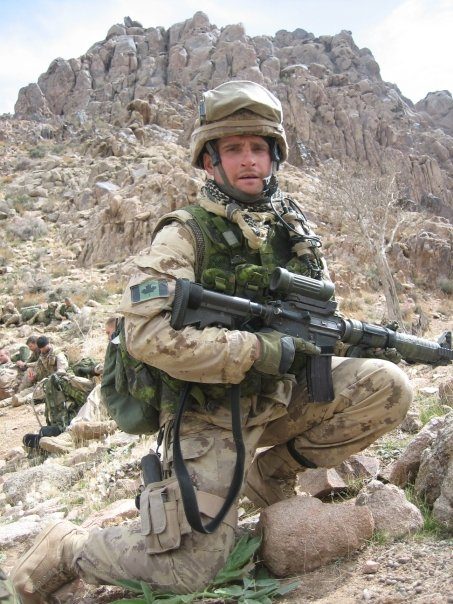
Jon loved serving in Afghanistan, and downplayed the dangers of the job in conversations with his parents.
“I have a lot of hope for this country,” he told his parents in a 2006 email.
“When I talk to the locals, 99 per cent of them are tired of the war and just want to live a normal life. That is why we are here, to provide security in the area and support the new government so that one day, this country can support itself.”
Buried in the middle of that email was an admission: Jon had survived an improvised explosive device that struck his armoured vehicle on April 7.
“Don’t worry, everyone walked away from the attack without injury,” he wrote, adding: “The experience has taught me some valuable lessons that will keep me safer in the future.”
Jon’s tour lasted eight months, after which he returned to Canada and bought a condo in Edmonton with his then-girlfriend, Megan. The two had been friends since Grade 5 and became a couple in high school.
The Canadian Death Race and a return to Afghanistan
Jon spent the summer of 2007 living with Megan in Edmonton and training with several soldiers in the area, including Robert Peel.
“He was the whole package,” Capt. Peel said. “He was extremely well-read, extremely fit, had an exceptional understanding of the battlespace and his people, and just oozed leadership.”
Jon and Peel decided to see how tough they were by tackling the grueling Canadian Death Race – a 125-kilometre ultra-marathon through the Rocky Mountains. Most contestants run the race as part of a five-man relay, but Jon and Peel were determined to each run the race solo.
WATCH BELOW: What it’s like to win the Canadian Death Race
Rob says spotters pulled him out of the race at the 100-kilometre mark, “because my eyes weren’t dilating anymore.”
But Jon just kept running. “Jon finished the race with no problems at all — except that he almost killed himself with acute renal failure,” Peel said.
Cpl. Baker says Jon’s performance won him a lot of respect among his fellow soldiers. “He put himself in the hospital voluntarily, trying to do that race himself,” Baker said. “The guy didn’t have an ounce of quit in him.”
Jon proposed to Megan on Christmas Eve in Costa Rica, and the two agreed to set their wedding date for one year later, December 2008 in Jamaica.
Jon volunteered for a second Afghan tour before the wedding: an eight-month training mission with the Operational Mentoring and Liaison Team, beginning in February 2008. He and his team of four Canadians would train groups of 100 Afghan troops to fight the Taliban.
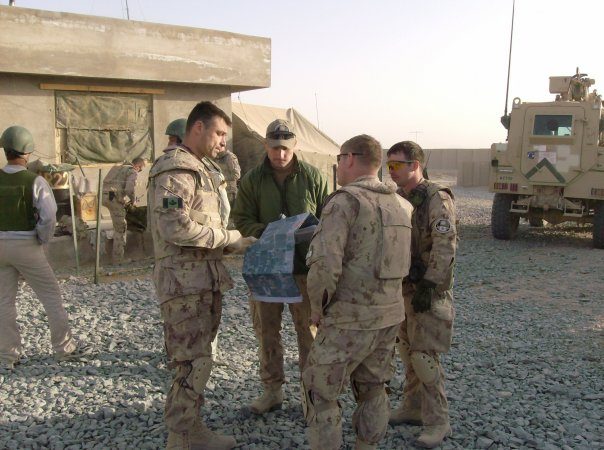
Jon spent four months training his first group of recruits before he was rotated out to work with a new group in Afghanistan’s volatile Zharey district in late May.
Jon was also separated from his original squad and assigned four temporary soldiers to command: Capt. Robert Peel and Corporals Baker, Bancarz and Ball. He knew Peel from their workout sessions in 2007, but he didn’t know the others very well.
Ambushed
Jon and his new squad were sent out on June 4, 2008, to mentor a company of Afghan army recruits through a major operation in southeastern Afghanistan. They left their base at 2:30 a.m. and marched south on a mission to check several former Taliban weapon caches that were thought to be empty.
They had just stopped between two farmers’ fields near their first objective when they came under fire. The Taliban had been waiting for them in a cluster of nearby buildings.
The Afghans and Canadians took cover on the west side of a low mud wall that protected them from machine gun fire to the east, northeast and south. They feared the Taliban would cut them down if they retreated across a field to the west, so they had no choice but to hunker down behind the wall and figure out how to break the ambush.
“They pretty much had us,” Baker said.
“They came very close to completely encircling us.”
But Jon didn’t panic. Instead, he sent Peel and Baker to fight from a trench-like road at the south end of the wall, and later dispatched Ball and Bancarz to protect their escape route at the north end. He also refused to let the Afghans abandon two soldiers who were seriously injured during the fight.
Peel says Jon expertly coordinated their defence through earpiece radios, issuing orders and demanding updates throughout the battle.
“The whole time Jon was just talking to us … in this really calm, cool voice,” Peel said. “The more stressed he got, the calmer his voice got.”
The ambush lasted nearly two hours, and ended when Cpl. Ball made contact with reinforcements at the north end of the wall. Jon ordered the retreat and the Afghan and Canadian troops slowly backed out of the ambush.
Peel and Baker stumbled across two injured Afghan soldiers as they brought up the rear. They told Jon and he sent several more ANA troops back to carry their injured men.
“It was organized chaos,” Baker said. He described the Afghan soldiers as “about as green as they get.”
Peel said the Afghan leaders were clearly inexperienced, but some of the Afghan recruits were impressive in their first battle.
WATCH BELOW: Alberta honours last Canadian killed in Afghanistan

The Canadian and Afghan troops put the two wounded men on helicopters and marched back to their base at Howz-e-Madad, southwest of Kandahar, after the battle. The Taliban harassed them along the way but failed to mount another full-scale assault. Baker, Bancarz and Peel say they’re still not sure how many Taliban they were fighting that day, but it might have been as many as 60 well-trained insurgents.
They all took a moment back at the base to appreciate just how lucky they’d been to escape the fight.
“It was probably about as bad as it gets, and if it wasn’t for Jon’s leadership and understanding of what was going on, and then all five of us working as a team to get out of there, it probably could have ended up a lot worse,” Peel said.
WATCH BELOW: Canada honours fallen soldiers in ‘No Stone Left Alone’ ceremonies

An accident on patrol
Three days later, Jon and several other soldiers were on a foot patrol after dark, with only a thin crescent of moon to light their way.
They were navigating through a grape field with the help of their night vision cameras, which cover one eye and depict the world in green light and shadow. Night vision cameras amplify light but they also mess with your depth perception, making it hard to see your feet or avoid small obstacles on the ground. It was particularly dark that night, and the field was filled with shadows.
Snyder never saw the shadow that would kill him — an unmarked, open well called a kariz, which farmers use to irrigate their fields. Most of these wells are uncovered holes big enough to drop a bucket into — nothing at all like a standard water well.
Jon fell into the kariz and plummeted more than 20 metres to the bottom, into an underground reservoir, sometime after 9 p.m. that night.
The soldiers above ground tried to get him out, but the hole was too deep and the ground around it was too soft.
Baker says Jon kicked off his heavy boots and tried to shrug off the nearly 45 kilograms of gear that threatened to drag him down.
“He fought for four or five hours,” Baker said. “He fought the whole time.”
Engineers, rescue crews and medics showed up and eventually pulled Jon from the water, unconscious, sometime after midnight on June 8. They rushed him by helicopter to Kandahar Airfield, where he was pronounced dead upon arrival.
“It was devastating,” said Peel, who was assigned to take over Jon’s unit the next day. “As the years have gone by it’s probably one of the things I’ve struggled with the most — the survivor’s guilt of it all.”
Bancarz says Jon’s death came as a shock to everyone on the base. “It doesn’t matter if you get vapourized by an IED, riddled with bullets or fall in a well,” he said. “It’s still hard, man. It’s still hard.”
The Snyder family learned about Jon’s accident the next day. An army colonel showed up to tell Megan about it, and she broke the news to Jon’s dad, David, by phone.
“I don’t know if I’ve been the same since,” David said.
Remembering Jon
The Canadian Forces flew Jon’s body back to Trenton, Ont., on June 11, and buried him at Beechwood Cemetery in Ottawa on June 16. He was the 85th Canadian soldier killed in the conflict.
Eight months later, Jon’s fiancée Megan accepted his Star of Military Valour from then-governor General Michaelle Jean. Bancarz, Baker, Peel and Ball were also there to accept their medals in the ceremony at Rideau Hall.
Jon’s former comrades say they have mixed feelings about the medals they earned from that ambush.
Baker tried to turn the medal down, but he’s grown to accept it over the years. “I realized I could use it to show how awesome Jon was,” he said.
“It’s a tremendous honour and I’m really proud of it and proud of the guys I was with that day, but I struggle with it sometimes,” Peel said.
Jon’s mother Anne, who lives in Nova Scotia, flew back to Penticton to be the Silver Cross mother for the Remembrance Day service in 2013. The town has set up several tributes for her son, including a memorial plaque. The Snyders also launched a scholarship in his name at the local high school.
David says his son would want to be remembered as a good man and soldier. He wouldn’t want to be lionized as a larger-than-life “hero.”
Baker says Jon lived his dream of being a soldier, and that’s how he’d probably want to be remembered.
“We’re all there because we volunteered to do it, and Jon was the epitome of that,” Baker said.
“That guy could literally do anything he wanted with his life, and that’s what he chose. He was probably one of the best I’ve ever seen do it.”
Peel says he used to look at Remembrance Day as a time to pay tribute to veterans from the First and Second World War — a set of distant names to honour from someone else’s conflict.
“The loss of Jon in Afghanistan made Remembrance Day very real for me,” he said.
“For me, every year, Remembrance Day is about remembering Jon Snyder.”






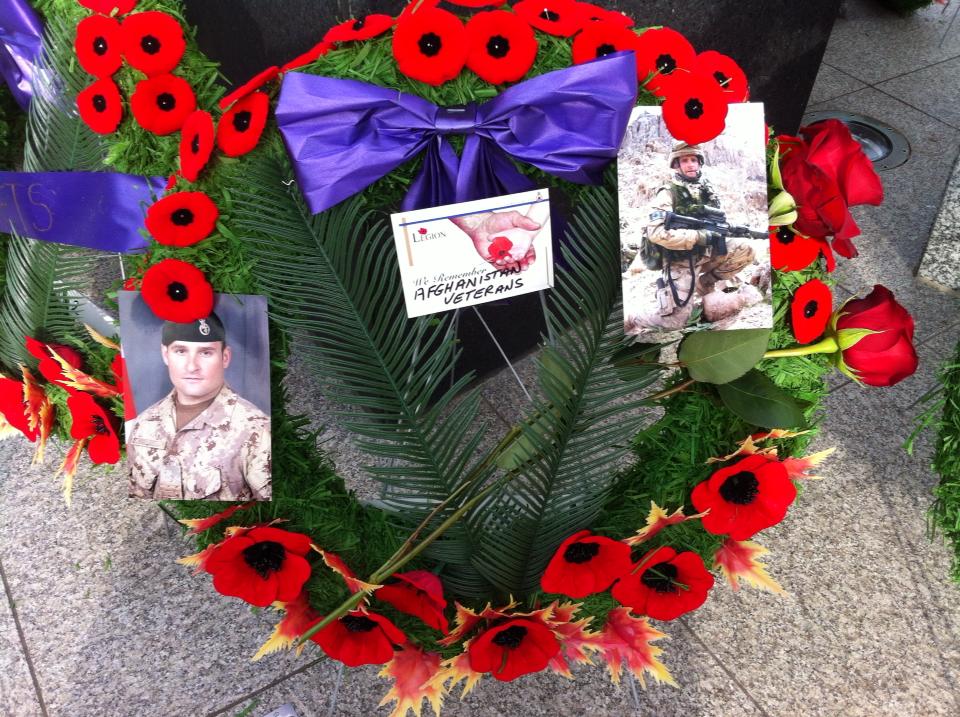
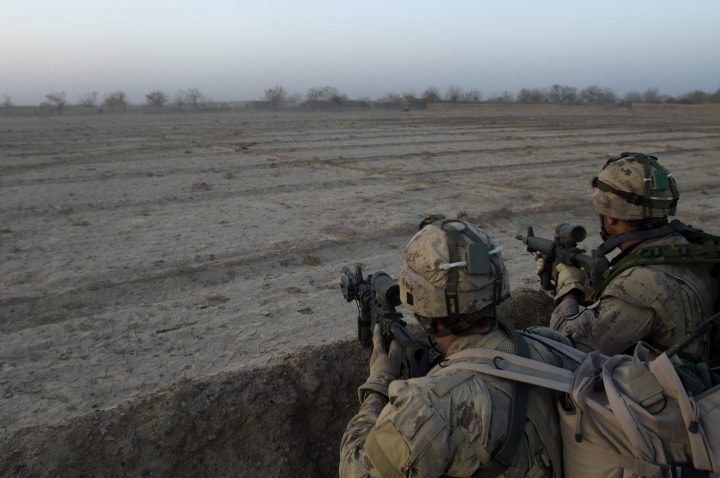




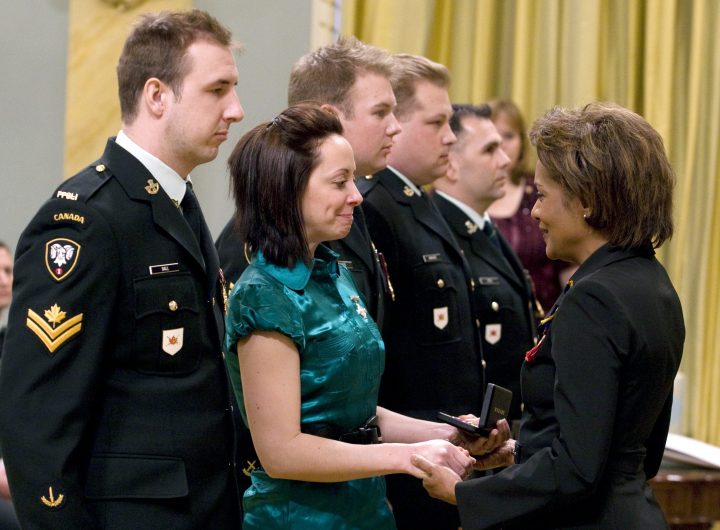
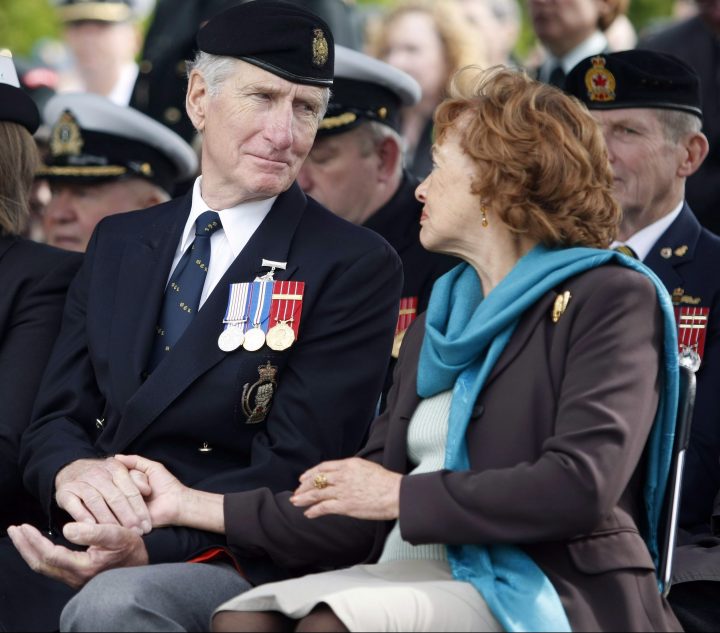
Comments